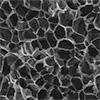Showing Spotlights 1 - 8 of 237 in category All (newest first):
 A groundbreaking self-powered lab-on-a-chip uses nanogenerator technology and AI for rapid, low-frequency blood conductivity measurements, leveraging advanced microfluidic and millifluidic systems to enhance point-of-care diagnostics.
A groundbreaking self-powered lab-on-a-chip uses nanogenerator technology and AI for rapid, low-frequency blood conductivity measurements, leveraging advanced microfluidic and millifluidic systems to enhance point-of-care diagnostics.
Jun 13th, 2024
 Scientists have developed a self-adhesive MXene hydrogel that can monitor vital signs, protect skin from UV, and deliver photothermal therapy.
Scientists have developed a self-adhesive MXene hydrogel that can monitor vital signs, protect skin from UV, and deliver photothermal therapy.
May 20th, 2024
 Coating glass vials with metal-organic frameworks enables simple, rapid, reusable and highly sensitive detection of water contaminants, outperforming current methods.
Coating glass vials with metal-organic frameworks enables simple, rapid, reusable and highly sensitive detection of water contaminants, outperforming current methods.
Apr 18th, 2024
 Researchers have developed an on-skin paintable waterproof biohydrogel for wearable bioelectronics, enabling high-fidelity monitoring of bioelectrical signals like ECG.
Researchers have developed an on-skin paintable waterproof biohydrogel for wearable bioelectronics, enabling high-fidelity monitoring of bioelectrical signals like ECG.
Apr 17th, 2024
 This advanced wearable biosensor leverages innovative printing technology to enable continuous, non-invasive monitoring of glucose, alcohol, pH, and temperature through sweat.
This advanced wearable biosensor leverages innovative printing technology to enable continuous, non-invasive monitoring of glucose, alcohol, pH, and temperature through sweat.
Apr 12th, 2024
 Researchers create a 3D flexible plasmonic web that enables ultrasensitive surface-enhanced Raman spectroscopy, detecting molecules remotely at the yoctomolar level.
Researchers create a 3D flexible plasmonic web that enables ultrasensitive surface-enhanced Raman spectroscopy, detecting molecules remotely at the yoctomolar level.
Apr 10th, 2024
 Neuromorphic antennal sensory system emulates ant antennae, outperforming humans in tactile exploration and magnetic perception tasks.
Neuromorphic antennal sensory system emulates ant antennae, outperforming humans in tactile exploration and magnetic perception tasks.
Mar 22nd, 2024
 Nnew stretchable biomimetic multimodal receptor built with kirigami film engineering and thermoelectric nanomaterials can switch between 2D and 3D modes to detect range of stimuli.
Nnew stretchable biomimetic multimodal receptor built with kirigami film engineering and thermoelectric nanomaterials can switch between 2D and 3D modes to detect range of stimuli.
Feb 23rd, 2024
 A groundbreaking self-powered lab-on-a-chip uses nanogenerator technology and AI for rapid, low-frequency blood conductivity measurements, leveraging advanced microfluidic and millifluidic systems to enhance point-of-care diagnostics.
A groundbreaking self-powered lab-on-a-chip uses nanogenerator technology and AI for rapid, low-frequency blood conductivity measurements, leveraging advanced microfluidic and millifluidic systems to enhance point-of-care diagnostics.
 Subscribe to our Nanotechnology Spotlight feed
Subscribe to our Nanotechnology Spotlight feed





